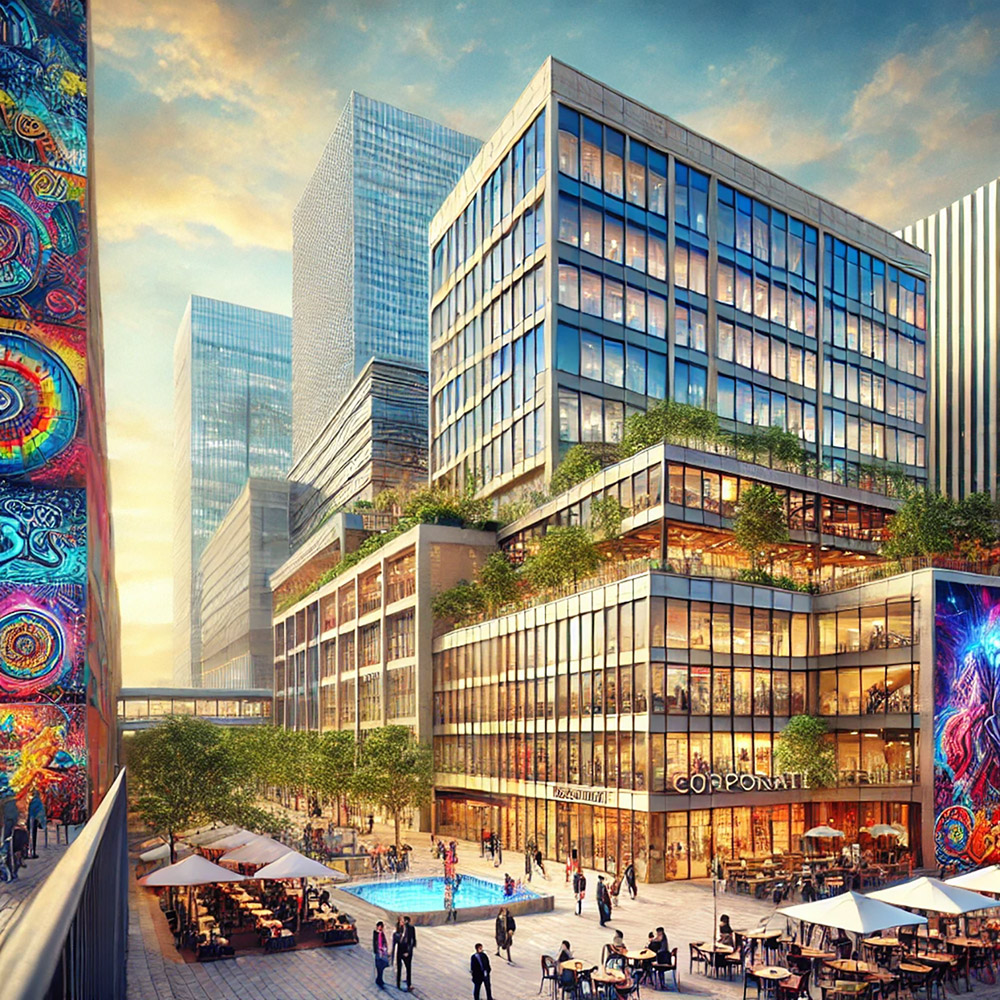As the North American commercial real estate (CRE) market evolves post-COVID amidst a unique era of technological revolution, remote work, and AI integration, pressure has intensified for properties to stand out in attracting company headquarters to multi-tenant buildings. The days when square footage or address alone determined desirability are over. Today’s businesses are looking for more than just an address—they want to be part of an amenitized ecosystem that reflects their values and mission.
Here are three key mission-driven differentiation factors that are helping building owners compete in today’s tightened North American commercial office market:1. A Global Approach to Business
In some scenarios, the building name itself can reflect the values of the company choosing to locate within it. For example, companies located in World Trade Center (WTC) facilities send a message about their desire to engage and connect beyond their local market. These companies benefit from a blend of leasable space, amenities, educational resources, and networking connectivity tailored to support their global mission.
300+
Through the World Trade Centers Association (WTCA), tenants gain access to a network of over 300 WTC businesses internationally and more than a million affiliated companies across nearly 100 countries. This global connectivity supports their growth and reinforces their international vision. These kinds of mission-driven environments help companies actualize their global ambitions while sending a message to the world.
Today’s businesses are looking for more than just an address—they want to be part of an amenitized ecosystem that reflects their values and mission.
2. Environmental Sustainability
Sustainability is another key differentiator that reflects a company’s values. Many organizations are embedding environmental responsibility into their core mission and expect their physical spaces to do the same. Modern office buildings now incorporate green technologies and certifications like LEED, appealing to organizations committed to corporate social responsibility. Sustainable design elements—such as energy-efficient systems, water conservation measures, and environmentally friendly materials—not only enhance a building’s value but also reduce operational costs over time.
These visible sustainability features, like green terraces, integrated plant systems, and solar panels, showcase to visitors and stakeholders that a company is serious about its environmental commitments. New and updated office developments increasingly highlight these sustainability features, ensuring they stand out in a competitive market.
33%
3. Culture & Quality of Life
Cultural placemaking has emerged as a valuable tool in attracting corporate headquarters. By developing or updating buildings near culturally rich environments where people want to spend their free time, companies publicly demonstrate that they care about the quality of life for their employees and the broader community.
The Dallas Arts District is an excellent example of this, with the city enhancing its cultural assets—including entertainment and event venues, public art, and vibrant retail—to attract corporate headquarters. Similarly, Tucson’s focus on cultural placemaking, using tax increment financing (TIF) to fund entertainment venues, public art spaces, and transportation hubs, has driven more aggressive office development growth. Companies that locate in these areas send a strong message about their focus on employee well-being and community connection.
Sustainable design elements not only enhance a building's value but also reduce operational costs over time.
A Mission-Driven Path Forward for Successful HQ Development
As the North American CRE landscape evolves, and as younger generations like Millennials and Gen Z take over decision-making for their companies’ locations, mission-driven differentiation will continue to be a key factor when signing long-term HQ leases. Properties that consider global connectivity, sustainability, and cultural vibrancy are not only positioned to weather today’s market challenges but will be better prepared for future storms. A building headquarters is no longer just a shell, just as business culture is no longer a logo. The CRE market is poised to embrace this shift in values.
